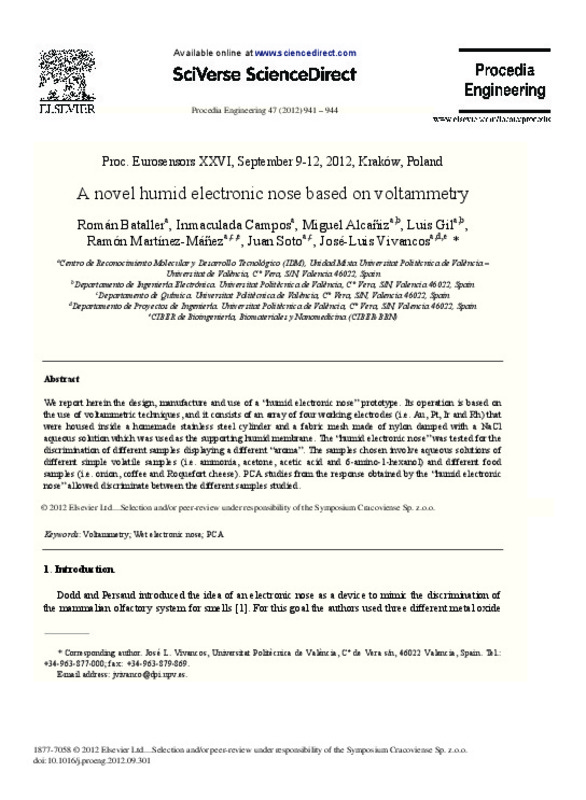JavaScript is disabled for your browser. Some features of this site may not work without it.
Buscar en RiuNet
Listar
Mi cuenta
Estadísticas
Ayuda RiuNet
Admin. UPV
A Novel Humid Electronic Nose Based on Voltammetry
Mostrar el registro completo del ítem
Bataller Prats, R.; Campos Sánchez, I.; Alcañiz Fillol, M.; Gil Sánchez, L.; Martínez Mañez, R.; Soto Camino, J.; Vivancos, J. (2012). A Novel Humid Electronic Nose Based on Voltammetry. Procedia Engineering. 47:941-944. doi:10.1016/j.proeng.2012.09.301
Por favor, use este identificador para citar o enlazar este ítem: http://hdl.handle.net/10251/37685









